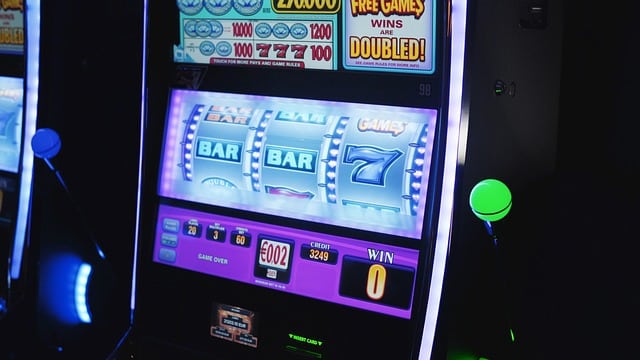The history of fruit machines is a captivating adventure that reflects the progress of recreation and betting over the years. From their simple start in the final decades of the 1800s to becoming a staple in gambling establishments throughout the world, these games of chance have undergone significant changes. Slot machines have enthralled players with their colorful graphics, enticing storylines, and the hope of transformative wins.
Originally designed as mechanical devices with rotating drums and few symbols, slot machines have evolved into cutting-edge tech-based games that incorporate innovative features and interactive elements. Today, they welcome millions of players, each wanting to hit the jackpot with just the lever pull of a lever or the tap of a tap. Delving into the intriguing past of these machines reveals not just the tale of a beloved hobby, but also a depiction of cultural shifts and technological advancements over the ages.
One of the Beginnings of Slot Machines’ History
A tale of slot machines begins in the final years of the 19th century, a time when mechanical devices were increasingly popular in entertainment venues. A groundbreaking slot machine came into existence by Charles Fey in 1895, referred to as the Liberty Bell. It featured three spinning reels and five symbols: hearts, diamonds, spades, a horseshoe, and the legendary Liberty Bell. Players would pull a lever to spin the reels, and if the symbols matched in a specific combination, they would win a payout. GA99VN Fey’s invention rapidly captured the attention of gamblers and set the foundation for future developments in casino slots games.
As the concept of the slot machine gained traction, various inventors looked to enhance Fey’s design. By the early 1900s, these machines were becoming a frequent presence in saloons and amusement parks. In 1907, the first electromechanical slot machine was introduced by Herbert Mills, which featured a more intricate system of payout mechanisms and the renowned fruit symbols that are still associated with slots today. This evolution marked a major shift in the gaming industry, as machines became more engaging and user-friendly, attracting more players.
The popularity of slot machines remained high throughout the early 20th century, leading to their extensive use in casinos across the United States. However, the rise of legal restrictions on gambling during the Great Depression presented challenges for the industry. Many machines were banned, but this did not halt innovators. Instead, they adjusted by creating machines that dispensed candy or gum instead of cash prizes, effectively bypassing the restrictions while still offering the thrill of a casino slots game. This ingenuity kept the spirit of gambling alive, setting the stage for the eventual resurgence of slot machines in modern casinos.
Advancement of Gambling Machine Innovation
The background of gambling machines commenced in the final 19th century with the invention of the initial mechanical slot machines. Charles Fey, a West Coast mechanic, introduced the first slot machine in 1895, which included three revolving reels and five images: heart shapes, diamonds, spades, a horseshoe, and the Liberty Bell itself. This simple yet enthralling design laid the foundation for the progress of slot games, creating an immediate attraction for players looking for entertainment and a opportunity to win.
As technology advanced, so did the styling and operations of gambling devices. By the middle 20th era, electromechanical machines appeared, including electrical components to enhance gameplay and increase payout opportunities. These advancements enabled for more complex features like multiple paylines and larger jackpots. The gambling venues embraced these developments, causing the rise of gambling devices as a major provider of profits within the casino business, radically altering the casino slots game experience.

The closing 20th and early 21st centuries heralded the age of digital technology, leading to the debut of video slots. These devices substituted traditional reels with monitors, permitting even more innovation in themes and gameplay features. Players could now enjoy rich graphics and sound effects, along with involving bonus rounds. The transition to online casinos further changed the casino slots game, allowing slots reachable to a global population at any time and anywhere, thus marking a fresh chapter in the development of gaming machine technology.
A Social Influence of Slot Machines
Slot machines have become not only a means of entertainment; they have integrated into the fabric of popular culture. Across movies and TV series to music and literature, these iconic gaming machines often act as emblems of luck and risk. Films like The Casino and Ocean’s 11 notably feature slots, depicting them as exciting yet unpredictable elements of the casino atmosphere. Their distinct attraction lies in the sound of coins falling, the revolving reels, and the bright blinking lights, which in unison create an electric atmosphere that draws people in.
In addition, slot machines have shaped social gatherings and events, making them a focal point in casinos and gaming venues. Numerous individuals do not just visit a casino to gamble; they go for the full experience, which includes the social interactions and the vibrant ambiance surrounding these machines. Special tournaments and themed gaming nights centered around these games also showcase their popularity, fostering community engagement and shared experiences among players. This social element has contributed to the machines’ enduring popularity.
The advancement of technology has further changed this cultural impact. Digital and online slots have broadened access to these games well beyond the walls of physical casinos. Players can now enjoy their favorite casino slot games from home or on the move, leading to the rise of virtual forums and discussion boards where enthusiasts share strategies and experiences. The continuous innovation in game design and the inclusion of storytelling have kept the cultural significance of slot machines alive, attracting younger audiences while maintaining a connection to their historical roots.
